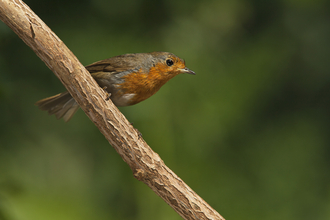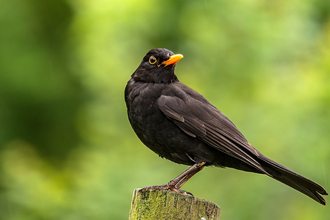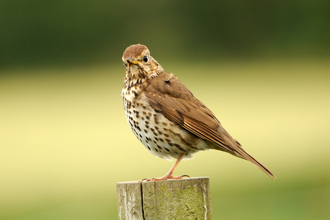Robins have a reputation for being friendly, but in fact are fiercely aggressive to their own kind, defending their territory throughout the year. British robins associate with gardeners because they evolved in woodland, following wild boar which turned up the ground exposing worms and grubs – robins’ favourite food. Continental robins are much shyer, but here in the UK they think you’re some strange kind of wild boar especially when you are gardening!
National Robin Day
Adam Jones
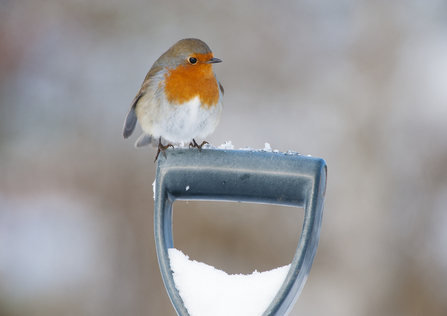
Mark Hamblin/2020Vision
Robins are one of the few birds that sing all year round, both male and female birds proclaiming their territories. Their winter song is slower and more broken than the summer one, a sweet, wistful series of notes that can often be heard at night.
Our resident birds are joined in winter by migrant robins from Scandinavia and Eastern Europe, driven away temporarily by freezing temperatures.
So spare a thought for the robins and other birds in your garden this winter and do what you can to help them survive the harsher conditions they face through cold and wet weather.
What is the best food for robins?
They like to eat protein-rich mealworms, energy-rich seeds, nuts and soft fruits. While robins do sometimes come to hanging feeders they mostly tend to forage on the ground so a level surface such as a bird table is ideal for them. Providing robins and other birds with water is essential, not only for drinking but bathing too, to keep their feathers in good order.
Nest boxes
Robins and many other wild birds will soon start looking for a safe place to nest. You can help them by providing a nest box, the longer they have to get used to a new possibility, the better.
They tend to only use open-fronted boxes. These are easy to construct and relatively inexpensive to buy. The floor of the box should be around 10cm square, the box should be 15cm deep, and the front around 5cm high. Use untreated timber, at least 15mm thick to provide insulation, remember to drill a couple of holes in the base of the box to allow any water to drain out. Boxes can also be purchased ready to erect – see the selection from CJ Wildlife in our online shop.
Siting the box is important. Robins prefer to nest low down, so up to five feet from the ground will do. The box needs to be somewhere sheltered to prevent wind and rain blowing in, and to hide the nest from predators. Nearby vegetation is also beneficial to the young birds making their first flight; they might not get very far on the first attempt! If you only have an open site, avoid direct sun which could overheat the nest. Don’t place the box too near to bird feeders, as the activity from visiting birds may disturb the nesting pair.
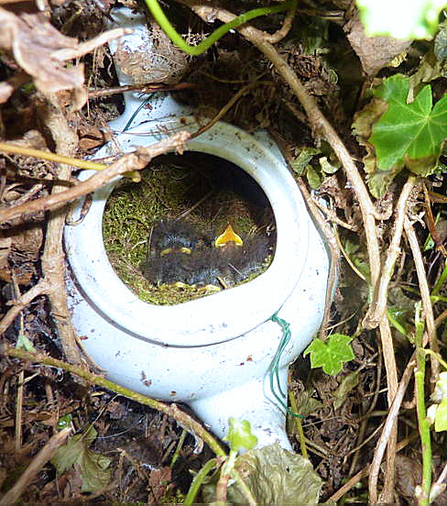
Karen Lloyd
Robins have been traditionally associated with ‘alternative’ nest boxes, so why not try an old teapot, spout-down for drainage, or even an old boot? Birds don’t really care about what the nestbox looks like – all they see is a suitable cavity. Don’t forget that robins are highly territorial, and unless your garden is large, you’re unlikely to get more than one pair nesting in it.
Boxes should be cleaned out late in the year – November is a good time – and otherwise left undisturbed. Robins can raise up to three broods in a good summer.


